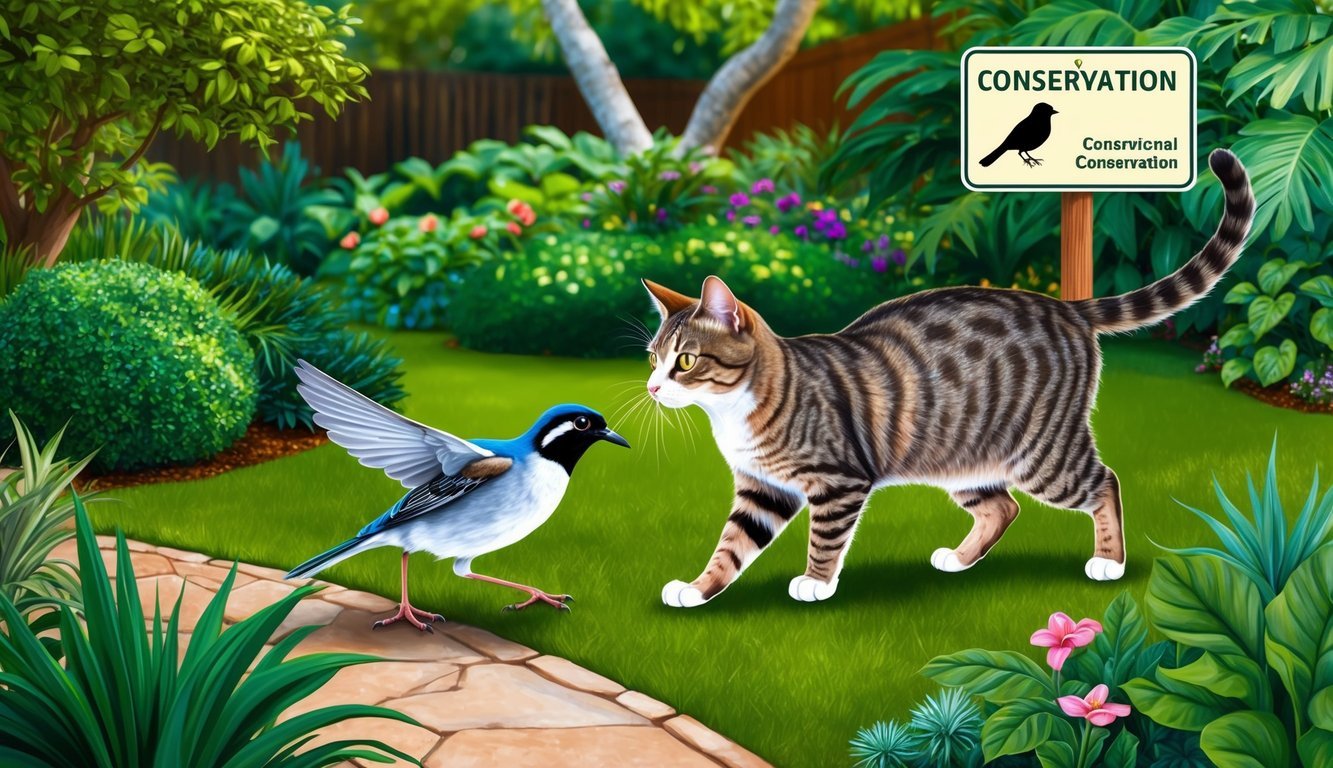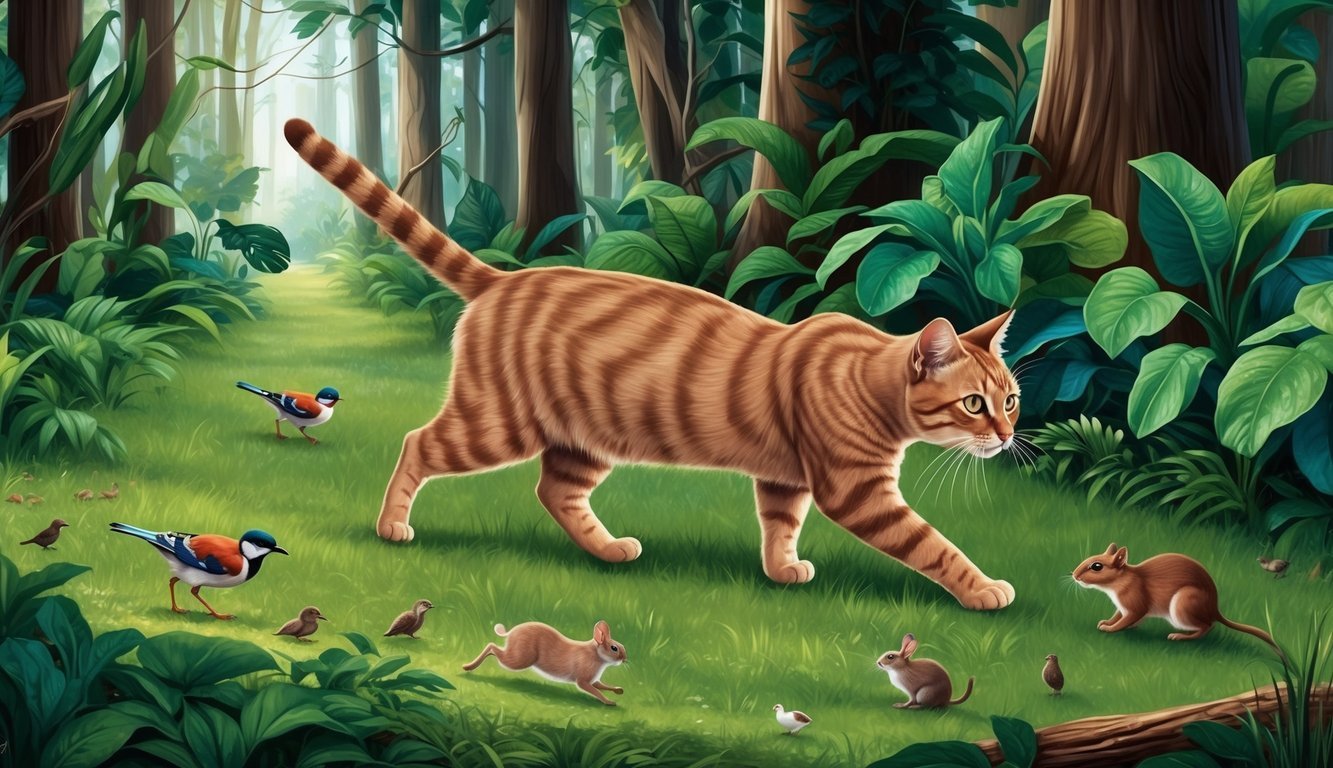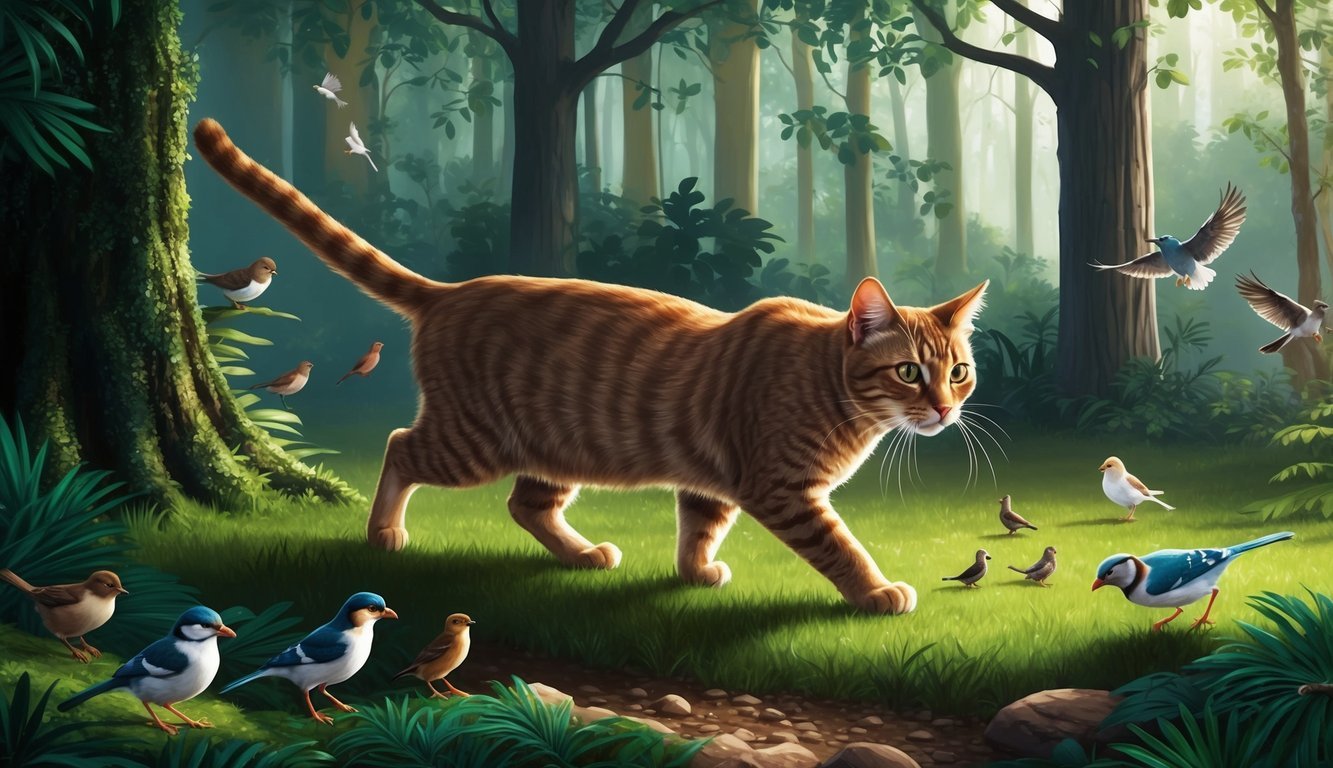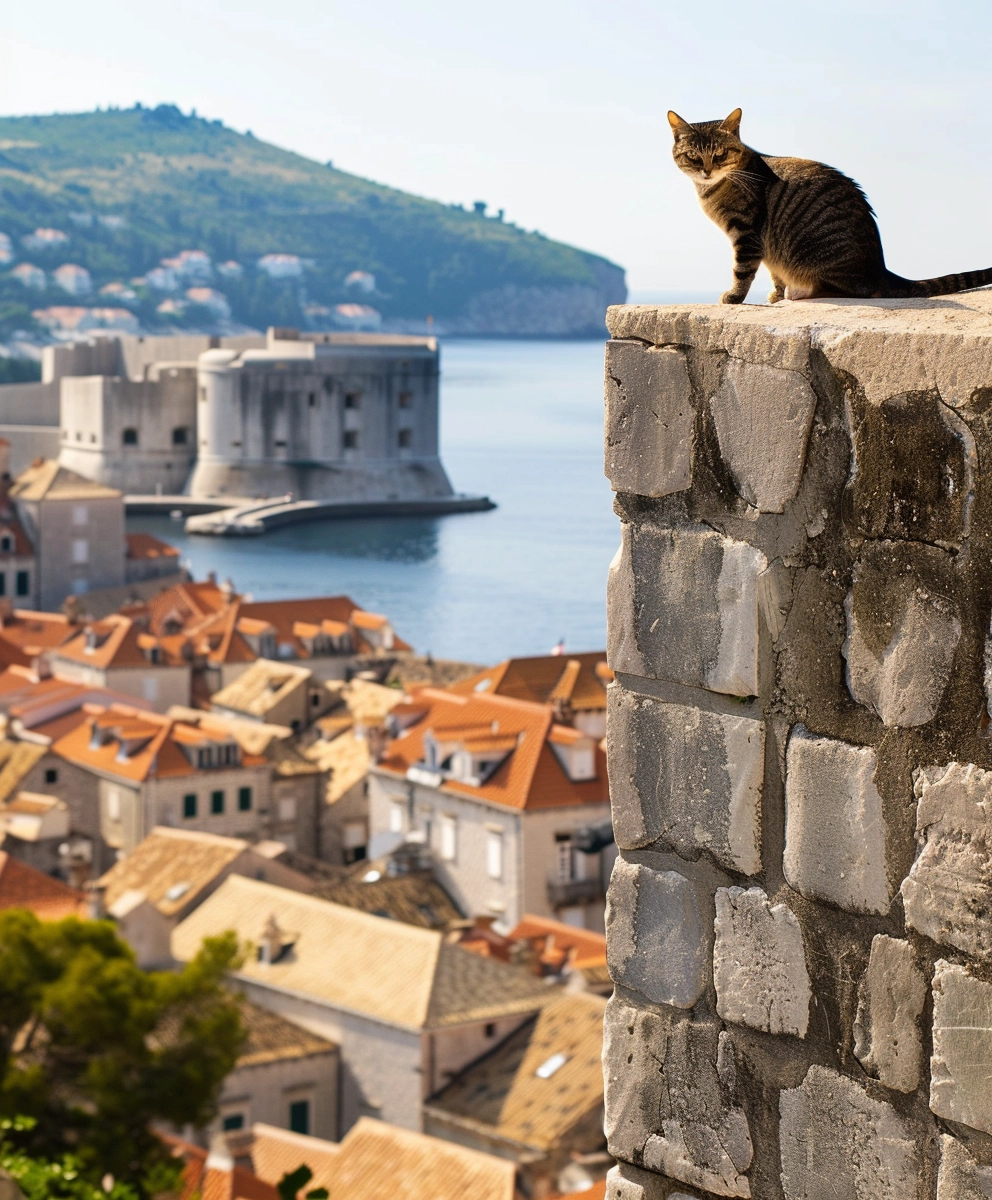The debate over outdoor cats and their impact on wildlife conservation has sparked intense discussions among animal lovers and conservationists.
Many people cherish their domestic cats, viewing them as beloved companions.
However, this affection often clashes with the concerns surrounding the ecological consequences of allowing these animals to roam freely. Outdoor cats are estimated to kill billions of birds and small mammals each year, raising critical questions about our responsibilities toward both pets and wildlife.
As you explore the complexities of this issue, consider the various viewpoints involved.
Cat owners advocate for animal welfare, arguing for the right of domestic cats to explore their environment.
On the flip side, wildlife advocates emphasize the need to protect vulnerable species from predation.
This tug-of-war highlights the balance we must find between enjoying pet ownership and ensuring the health of ecosystems.
Understanding this controversy is essential for anyone who loves animals and nature.
The choices you make regarding outdoor cats can have profound impacts on local wildlife.
Realizing how these seemingly separate worlds interconnect will deepen your appreciation for both your feline friends and the wildlife around you.
The Domestication of Felis Catus
Understanding the domestication of domestic cats helps shed light on their current relationship with humans and wildlife.
The journey of cats from wild creatures to beloved pets is both fascinating and complex.
Origin and History of Domestic Cats
Domestic cats, or Felis catus, trace their origins back to the Near East around 9,000 years ago.
They started forming a bond with humans as they followed agricultural societies, attracted by rodents drawn to stored grain.
The primary ancestor of today’s domestic cat is the African wildcat.
Their natural hunting skills made them valuable allies in controlling vermin.
Over time, humans and cats established a mutually beneficial relationship, leading to the domestic cat becoming one of the most popular pets worldwide.
Transition to Outdoor Access
As cats became more integrated into households, many were given outdoor access.
You might own a cat that enjoys roaming outside, exploring gardens, or lounging in the sun.
This behavior arose from their instinctual need for territoriality and prey-driven activity.
Outdoor access, while natural, introduces a range of impacts on local wildlife.
Free-roaming cats can pose a significant threat to birds and small mammals, contributing to ecological concerns.
Understanding these dynamics is key to creating responsible pet ownership guidelines.
Understanding Cat Predation

Cat predation raises important questions about the effects of outdoor cats on wildlife.
You’ll find that their natural instincts and the resulting predation can significantly impact local ecosystems.
Let’s explore the predatory behaviors of cats, how these behaviors influence wildlife populations, and the findings from various predation studies.
Predatory Instincts of Cats
Cats are natural predators, driven by instincts that have evolved over thousands of years.
Their hunting methods often include stalking, pouncing, and capturing small animals.
These behaviors are not just play; they are rooted in their biology.
They rely on sharp senses and agility to catch prey, making them effective hunters.
Even well-fed domestic cats will hunt, suggesting that it’s not solely about food.
This innate drive can lead to significant predation, even in urban environments.
Impact of Predation on Wildlife
The impact of cat predation can be profound, particularly for vulnerable wildlife populations.
Studies indicate that cats can influence local ecosystems by preying on birds, small mammals, and reptiles.
This predation can lead to a decline in certain species, especially ground-nesting birds, which may be at risk from cat attacks.
For example, some estimates suggest that outdoor cats kill billions of birds and small mammals each year in the United States alone.
Such losses can disrupt food chains and lead to reduced biodiversity, affecting not just individual species but entire ecosystems.
Predation Studies and Mortality Estimates
Predation studies aim to quantify the impact of cats on wildlife mortality.
Various research projects have attempted to estimate how many animals are killed by outdoor cats annually.
Researchers utilize methods like direct observation, GPS tracking, and analysis of prey remains.
These approaches help reveal the extent of cat predation.
For instance, some findings indicate that cats are responsible for a large percentage of wildlife mortality in urban and suburban areas.
The results can guide management strategies to address the ecological consequences tied to free-roaming cats, highlighting the need for informed decisions in wildlife conservation.
Conservation Challenges

The presence of outdoor cats introduces significant challenges to wildlife conservation.
Their impact on biodiversity, role as invasive species, and indirect effects on ecosystems create a complex issue that conservationists must navigate.
Threat to Biodiversity
Outdoor cats contribute to the decline of various bird and small mammal populations.
Studies show that free-ranging cats kill billions of birds annually, leading to concerns about specific species at risk.
For instance, about 9% of all bird species are preyed upon, impacting both common and endangered populations.
This predation affects not just individual species, but entire ecosystems.
When a key predator like a bird population decreases, it can disrupt the food chain.
Loss of biodiversity makes ecosystems less resilient and affects the services they provide, such as pollination and pest control.
Invasive Species and Habitat Loss
Free-ranging cats are classified as invasive species in many regions.
They compete with native predators for food and territory, often displacing species that have a crucial role in local ecosystems.
Cats’ hunting habits exacerbate habitat loss by eliminating species that help maintain the ecological balance.
The impact on native wildlife can lead to increased vulnerability to extinction.
Many species that coexist with cats may not have evolved defenses against them.
This can reduce the native species’ population and, over time, lead to local extinctions—a serious concern for biodiversity conservation efforts.
Indirect Effects on Ecosystems
The presence of outdoor cats also has indirect effects on ecosystems.
Their predation leads to shifts in behavior and populations of prey species.
For example, birds might alter nesting habits or avoid certain areas, which can limit their ability to thrive and reproduce.
Additionally, outdoor cats contribute to the spread of diseases.
They can be vectors for parasites and pathogens that affect wildlife, potentially leading to further population declines among vulnerable species.
This interaction highlights the complex web of life and the unintended consequences of human actions, like allowing outdoor cats to roam freely.
Cats and Human Impact
The relationship between human actions and the impact of outdoor cats on wildlife is complex.
Not only does cat ownership influence local ecosystems, but factors such as disease transmission and other human-related activities play crucial roles in this dynamic.
Role of Cat Ownership
As a cat owner, your choices directly affect wildlife.
When cats roam outdoors, they can hunt birds, small mammals, and reptiles.
Studies estimate that free-ranging domestic cats kill billions of animals each year, contributing to declining populations of various species.
Responsible ownership includes keeping your cat indoors or in secure outdoor enclosures.
This not only protects wildlife but can also enhance your cat’s health and safety.
Engaging in local initiatives to manage feral cat populations can also create a positive impact.
Disease Transmission Concerns
Outdoor cats can spread diseases that affect both wildlife and domestic animals.
One significant concern is Toxoplasma gondii, a parasite that can have devastating effects on wildlife, particularly marine mammals.
Cats shed the parasite in their feces, contaminating water sources and soil.
When wildlife comes into contact with these areas, they may contract the disease.
This transmission cycle raises alarms for conservationists, as affected animals can suffer reproductive failures or mortality.
Awareness and action regarding disease prevention are essential for safeguarding ecosystems.
Anthropogenic Factors and Wildlife
Human activities significantly contribute to the challenges wildlife face today.
Urban development, habitat loss, and pollution are key anthropogenic factors that lead to increased mortality among wildlife, including collisions with vehicles and exposure to toxins.
These pressures can be exacerbated by the presence of free-ranging cats.
For instance, as habitats disappear, remaining wildlife becomes more vulnerable to predation.
Understanding the interconnectedness of these factors can help guide effective conservation strategies and initiatives to protect wildlife from the impacts of both human actions and outdoor cats.
The Debate on Outdoor Cats
The discussion around outdoor cats is complex, intertwining concerns about wildlife conservation, the behaviors of feral and free-ranging cats, and ethical issues related to animal protection.
Understanding these layers can help you navigate this contentious topic.
Free-Ranging and Feral Cats
Free-ranging and feral cats pose significant challenges to local wildlife.
While free-ranging cats may have owners but roam outdoors, feral cats live entirely independently of humans.
Both groups often hunt birds, small mammals, and reptiles, leading to declines in some species.
Research suggests that outdoor cats contribute to the deaths of billions of birds and small animals annually.
This reality can be alarming if you care about wildlife.
Local ecosystems might suffer as a result, prompting many to advocate for responsible pet ownership, including keeping cats indoors or in secure enclosures.
Wildlife Management and Conservation
Wildlife management strategies must consider the impact of cats on native species.
Many conservationists argue that feral cat populations should be managed through TNR (Trap-Neuter-Return) programs.
These initiatives aim to reduce feral cat numbers humanely, preventing further predation on wildlife.
By supporting these programs, communities can address the issue without resorting to lethal methods.
This balance is essential for maintaining biodiversity while acknowledging the presence of free-ranging cats.
The debate continues as different stakeholders advocate for various wildlife management approaches.
Ethical Considerations in Animal Protection
Ethical concerns about outdoor cats are at the forefront of the debate.
On one side, you have cat lovers who believe in the right of cats to roam freely and express their natural behaviors.
They argue that outdoor environments are vital for feline well-being.
Conversely, wildlife conservationists stress the moral obligation to protect native species from predation.
This creates a conflict between animal rights and ecological responsibility.
Addressing both perspectives is crucial for developing policies that protect wildlife while ensuring feline welfare.
Balancing these ideals remains a challenge in discussions about outdoor cat management.
Mitigating the Controversy
Addressing the controversy surrounding outdoor cats involves practical approaches that balance animal welfare with wildlife conservation.
Strategies like Trap-Neuter-Return (TNR) and creating safer environments for both cats and wildlife can significantly reduce conflict and promote coexistence.
Effectiveness of Trap-Neuter-Return (TNR)
Trap-Neuter-Return (TNR) programs involve humanely trapping feral and stray cats, sterilizing them, and then returning them to their territories.
This method helps to stabilize cat populations over time.
Research shows that TNR can lead to a gradual decrease in the number of outdoor cats.
A study in urban areas revealed that TNR significantly reduced the reproduction rates of feral cats.
Additionally, TNR helps improve the health of existing cat populations, which benefits both the cats and the surrounding wildlife.
When fewer cats are born, wildlife predation decreases, allowing local ecosystems to thrive.
Creating Safer Outdoor Environments
Creating safer outdoor environments is essential in reducing the impact of outdoor cats on wildlife.
Cat owners can take proactive steps to safeguard both their pets and local biodiversity.
One effective approach is the use of enclosed cat patios (catios), which allow cats to enjoy the outdoors without posing a threat to wildlife.
Another option is to keep cats indoors, especially during dawn and dusk when many birds and small animals are most active.
Community initiatives, like planting native flowers and creating bird-friendly spaces, can also help support local wildlife.
This fosters a healthier ecosystem for both cats and wildlife.
Scientific and Community-Based Solutions
Combining scientific research with community involvement can lead to innovative solutions. Data collection on cat populations and their predation patterns helps inform conservation strategies.
Engaging local communities in awareness programs is crucial.
Educational campaigns can help cat owners understand the importance of responsible pet ownership.
Additionally, partnerships between animal welfare organizations and conservation groups can promote initiatives like TNR.
This collaboration strengthens community support and enhances wildlife conservation while improving the lives of feral and stray cats.
Future Directions

Addressing the controversy surrounding outdoor cats and wildlife conservation requires collaborative efforts.
Here are some key areas to focus on:
1.
Integrated Wildlife Management:
Wildlife management strategies should include outdoor cats in their frameworks.
This means considering how cats interact with local ecosystems and their effects on biodiversity.
2.
Research on Predation Impacts:
Further studies are needed to understand the extent of cat predation on wildlife.
Collecting data on species affected by free-roaming cats can help conservationists make informed decisions.
3.
Community Engagement:
Involving community members in discussions about outdoor cat management is crucial.
You can foster awareness about the impacts of anthropogenic threats on local wildlife and the importance of biodiversity.
4.
Humane Management Practices:
Encouraging humane management methods, such as trap-neuter-return (TNR), can mitigate the threat to wildlife while addressing cat populations.
TNR programs show promise in balancing cat welfare and conservation goals.
5.
Legislative Support:
Advocating for policies that support wildlife conservation can create a more balanced approach.
This includes legislation that addresses both cat management and the protection of vulnerable species.

